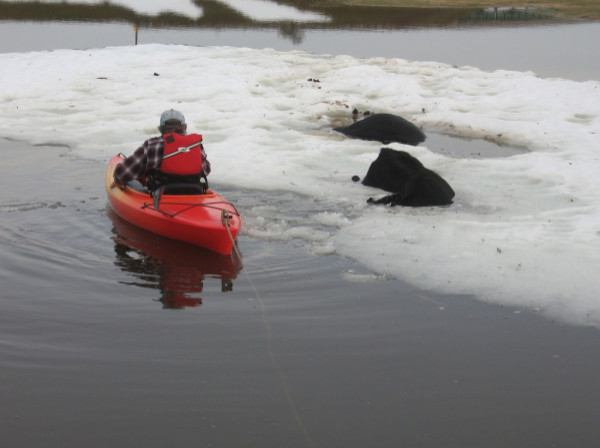Thousands Of Dead Cattle Litter South Dakota Countryside After Historic Blizzard

South Dakota ranchers are facing devastating losses in the aftermath of a blizzard that dropped as much as four feet of snow in western reaches of the state. It has been estimated as many as 100,000 cattle have been killed because of the snowstorm, devastating herds that many ranchers rely on to make a living, FoxNews.com reported.
Sprinkled among melting patches of snow, thousands of carcasses now litter the flatlands where the cattle once grazed. The cattle likely died of either hypothermia or suffocation under the growing snowdrifts, said Silvia Christen, executive director of the South Dakota Stockgrowers Association.
“It’s anyone’s guess how drastic this loss will be. The cattle were soaked to the bone. Then the wind and really heavy snow started -- it just clung to them and weighed them down,” Christen told Reuters. “Many of them just dropped where they were walking.” In all, it has been estimated most of the ranchers in the state lost between 50 percent and 75 percent of their herds, as Christen said the state is now looking at cattle deaths into the “tens of thousands if not pushing 100,000 at this point.”
Blizzard is over and South Dakota ranchers are counting their losses. Dead cattle everywhere. pic.twitter.com/t8ZvsoTEQg
— DenaMarie (@Mommas5boys) October 9, 2013
Adding to the stress of the situation is the U.S. federal government’s partial shutdown, which means ranchers can’t currently apply for disaster relief under the Livestock Indemnity Program. The program would pay them part of the market value of the cattle’s value. But applying for the relief is currently impossible since the program is part of the 2008 farm bill extension bill that expired Oct. 1. The ranchers are also unable to file the necessary paperwork regarding their relief needs since staff members at the U.S. Agriculture Department’s Farm Service Agency are currently furloughed.
The blizzard also brought heavy snowfall to parts of Colorado and Wyoming. The snowstorm arrived so early in the season this year that the cattle were unable to grow their heavier winter coats. For now, livestock farmers are being advised to document their losses using the animals’ identification tags and photographs. These data would then be readily available if and when the farm bill is passed after the government reopening.
© Copyright IBTimes 2024. All rights reserved.





















